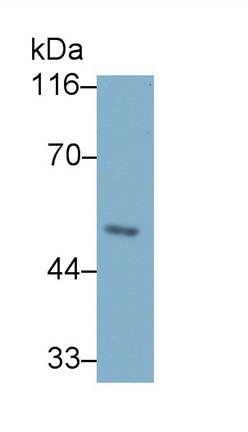Polyclonal Antibody to Peroxisome Proliferator Activated Receptor Gamma (PPARg)
PPAR-G; PPARG1; PPARG2; NR1C3; Glitazone Receptor; Nuclear Receptor Subfamily 1 Group C Member 3
- Product No.PAA886Ra01
- Organism SpeciesRattus norvegicus (Rat) Same name, Different species.
- SourcePolyclonal antibody preparation
- HostRabbit
- Potencyn/a
- Ig Type IgG
- PurificationAntigen-specific affinity chromatography followed by Protein A affinity chromatography
- LabelNone
- Immunogen RPA886Ra01-Recombinant Peroxisome Proliferator Activated Receptor Gamma (PPARg)
- Buffer Formulation0.01M PBS, pH7.4, containing 0.05% Proclin-300, 50% glycerol.
- TraitsLiquid
- Concentration0.5mg/mL
- Organism Species Moren/a
- ApplicationsWB
If the antibody is used in flow cytometry, please check FCM antibodies. - DownloadInstruction Manual
- UOM 20µl100µl 200µl 1ml 10ml
- FOB
US$ 103
US$ 239
US$ 342
US$ 855
US$ 3420
For more details, please contact local distributors!
SPECIFITY
The antibody is a rabbit polyclonal antibody raised against PPARg. It has been selected for its ability to recognize PPARg in immunohistochemical staining and western blotting.
USAGE
Western blotting: 0.01-2µg/mL;
Optimal working dilutions must be determined by end user.
STORAGE
Store at 4°C for frequent use. Stored at -20°C in a manual defrost freezer for two year without detectable loss of activity. Avoid repeated freeze-thaw cycles.
STABILITY
The thermal stability is described by the loss rate. The loss rate was determined by accelerated thermal degradation test, that is, incubate the protein at 37°C for 48h, and no obvious degradation and precipitation were observed. The loss rate is less than 5% within the expiration date under appropriate storage condition.
GIVEAWAYS
INCREMENT SERVICES
-
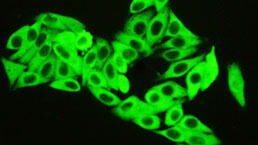 Antibody Labeling Customized Service
Antibody Labeling Customized Service
-
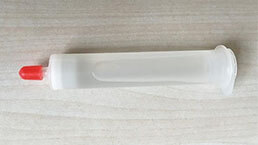 Protein A/G Purification Column
Protein A/G Purification Column
-
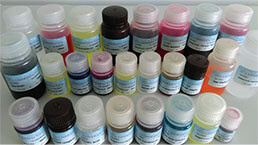 Staining Solution for Cells and Tissue
Staining Solution for Cells and Tissue
-
 Positive Control for Antibody
Positive Control for Antibody
-
 Tissue/Sections Customized Service
Tissue/Sections Customized Service
-
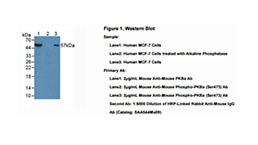 Phosphorylated Antibody Customized Service
Phosphorylated Antibody Customized Service
-
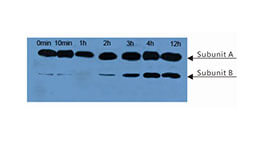 Western Blot (WB) Experiment Service
Western Blot (WB) Experiment Service
-
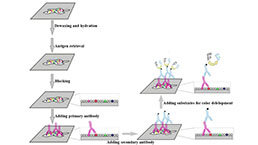 Immunohistochemistry (IHC) Experiment Service
Immunohistochemistry (IHC) Experiment Service
-
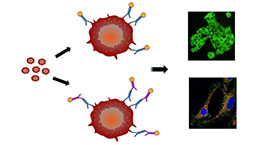 Immunocytochemistry (ICC) Experiment Service
Immunocytochemistry (ICC) Experiment Service
-
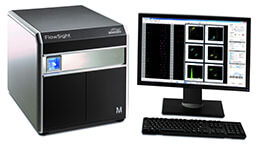 Flow Cytometry (FCM) Experiment Service
Flow Cytometry (FCM) Experiment Service
-
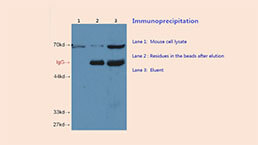 Immunoprecipitation (IP) Experiment Service
Immunoprecipitation (IP) Experiment Service
-
 Immunofluorescence (IF) Experiment Service
Immunofluorescence (IF) Experiment Service
-
 Buffer
Buffer
-
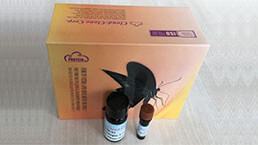 DAB Chromogen Kit
DAB Chromogen Kit
-
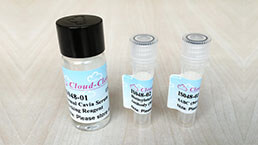 SABC Kit
SABC Kit
-
 Long-arm Biotin Labeling Kit
Long-arm Biotin Labeling Kit
-
 Real Time PCR Experimental Service
Real Time PCR Experimental Service
| Magazine | Citations |
| Neuroscience Letters | Elevated levels of PPAR-gamma in the cerebrospinal fluid of patients with multiple sclerosis Pubmed: 24021801 |
| J Cell Biochem. | Nonivamide enhances miRNA let‐7d expression and decreases adipogenesis PPARγ expression in 3T3‐L1 cells Pubmed:25704235 |
| Osteoarthritis Cartilage | Establishment of a rabbit model to study the influence of advanced glycation end products accumulation on osteoarthritis and the protective effect of pioglitazone PubMed: 26321377 |
| J Clin Diagn Res. | Evaluation of Protein Kinase Cβ and PPARγ Activity in Diabetic Rats Supplemented with Momordica charantia pmc:PMC4866090 |
| Journal of Clinical&Diagnostic Research | Evaluation of Protein Kinase Cβ and PPARγ Activity in Diabetic RatsSupplemented with Momordica charantia. pubmed:27190792 |
| Osteoarthritis and Cartilage | Establishment of a rabbit model to study the influence of advanced glycation end productsaccumulation on osteoarthritis and the protective effect of pioglitazone. pubmed:26321377 |
| Neuroscience Letters | Unlike PPARgamma, neither other PPARs nor PGC-1alpha is elevated in the cerebrospinal fluid of patients with multiple sclerosis pubmed:28483651 |
| European Journal of Immunology | Engulfment of Hb‐activated platelets differentiates monocytes into pro‐inflammatory macrophages in PNH patients Pubmed:29677388 |
| Histochemistry and Cell Biology | Simpson–Golabi–Behmel syndrome human adipocytes reveal a changing phenotype throughout differentiation Pubmed:29574488 |
| molecular and cellular biochemistry | Maternal omega-3 fatty acids and vitamin E improve placental angiogenesis in late-onset but not early-onset preeclampsia Pubmed: 31420792 |
| Nutrients. | Hyperglycemia Changes Expression of Key Adipogenesis Markers (C/EBPα and PPARᵞ) and Morphology of Differentiating Human Visceral Adipocytes Pubmed: 31398873 |
| journal of biochemical and molecular toxicology | Indomethacin and juglone inhibit inflammatory molecules to induce apoptosis in colon cancer cells Pubmed: 31916655 |
| J Cosmet Dermatol | In©\vitro effect of pine bark extract on melanin synthesis, tyrosinase activity, production of endothelin©\1 and PPAR in cultured melanocytes exposed to Ultraviolet?¡ 33960120 |
| American Chemical Society | TRPA1 Agonist Cinnamaldehyde Decreases Adipogenesis in 3T3-L1 Cells More Potently than the Non-agonist Structural Analog Cinnamyl Isobutyrate 33403292 |
| PLoS One | Quantitative real-time measurement of endothelin-1-induced contraction in single non-activated hepatic stellate cells 34343209 |
| Prostaglandins Leukot Essent Fatty Acids | Maternal Vitamin D Deficiency Reduces Docosahexaenoic Acid, Placental Growth Factor and Peroxisome Proliferator Activated Receptor Gamma levels in the Pup … 34768025 |
| Food and Chemical Toxicology | Melatonin attenuates cisplatin-induced acute kidney injury in mice: Involvement of PPARα and fatty acid oxidation Pubmed:35367536 |



